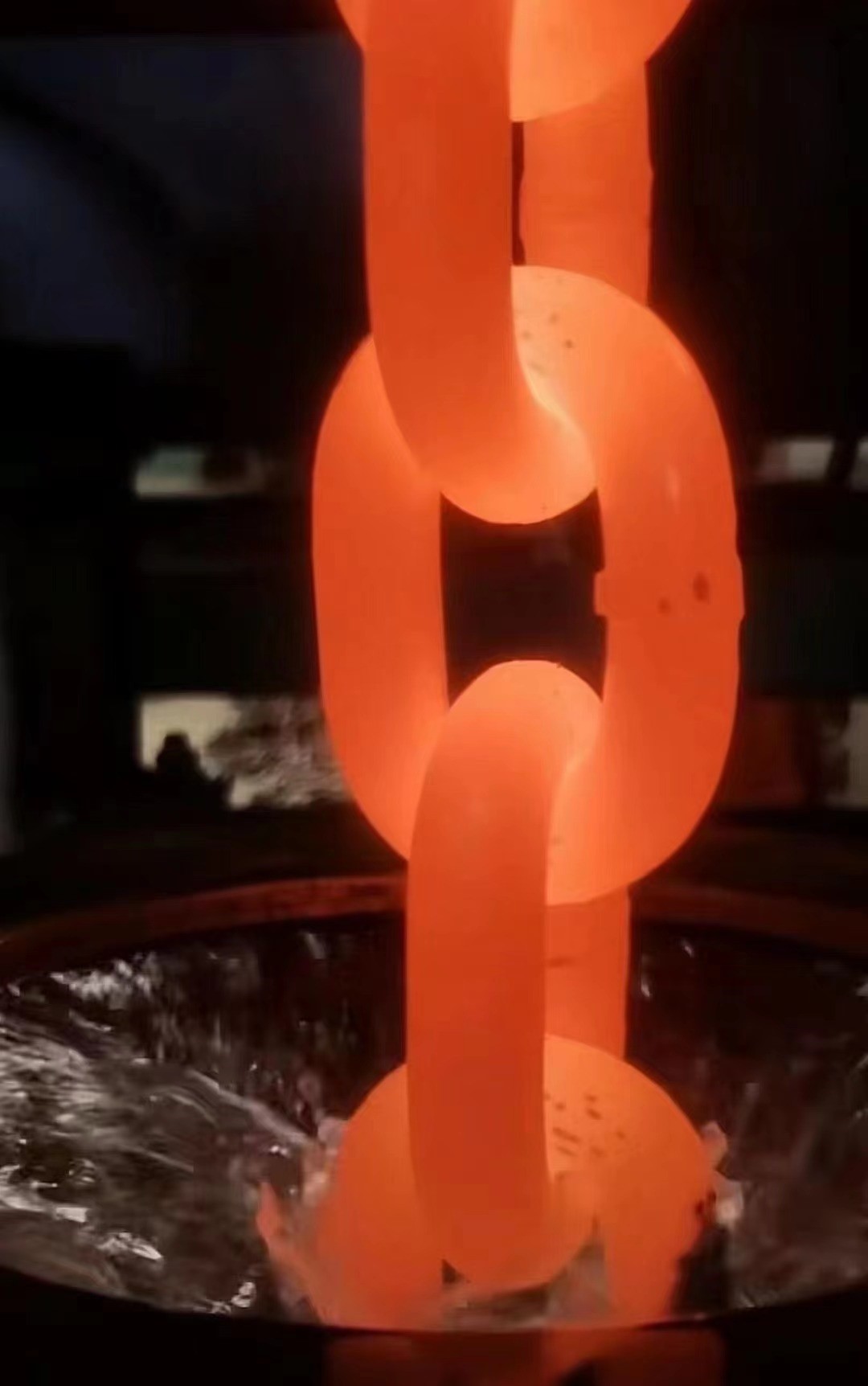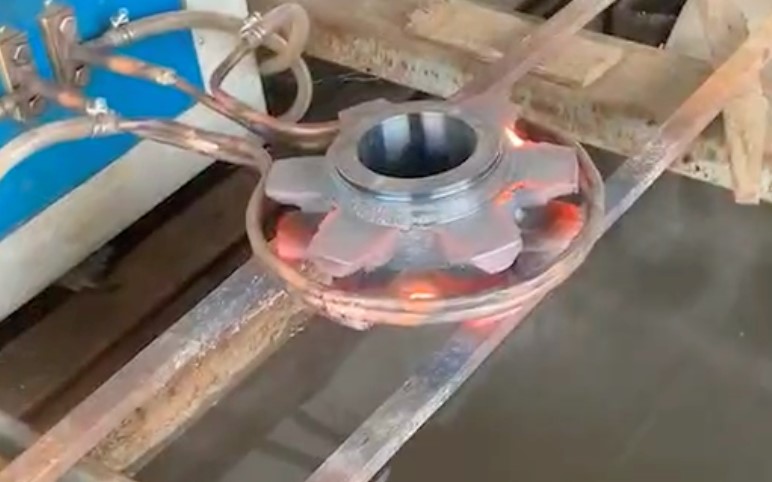Heat treatment is used to alter the physical property of round steel link chains, usually to increase the strength and wear characteristics of the round link conveyor chain while maintaining sufficient toughness and ductility for the application. Heat treatment involves the use of heating, rapid cooling (quenching), and sometimes even cooling of components to extreme temperatures to obtain the desired result.
All metals consist of some kind of microstructure. Molecules change position when heated. When the metal is quenched, the molecules remain in the new microstructure, with increased hardness levels and expectations of strength and wear resistance of the component. The components of the chain are heat treated separately before assembly, which helps to set the target property of each component to the ideal condition. There are many different heat treatment methods that can be used to adjust hardness levels and depths. The three most common heat treatment methods for chain components are:
Through hardening
Through hardening is the process of heating, quenching and tempering round link chains. This process hardens and strengthens the material evenly throughout the entire section of the chain links, unlike some methods that only harden the outer layer. The result is tempered steel that is harder and stronger, but still has sufficient ductility and toughness.
Carburizing – Case hardening
Carburizing is the process of exposing steel to carbon to harden while the metal is being heated. Adding carbon to the surface of steel changes the chemical composition to make it more responsive to heat treatment while maintaining a softer, ductile core hardness. Carbon is absorbed only on exposed chain links surfaces, and the depth of carbon penetration is proportional to the time spent in the furnace, hence called case hardening. Case hardening does create the potential for harder steels than other hardening methods, but deep case hardening can take more time and is very expensive.

Induction hardening

Similar to through-hardening, it requires a process of heating and then quenching, but the application of heat is carried out in a controlled manner through an induction process (strong magnetic field). Induction hardening is usually carried out as a secondary process in addition to through hardening. The control induction process limits the depth and pattern of hardness changes. Induction hardening is used to harden a specific section of a part, rather than the entire part.
While heat treatment is an effective and critical way to improve round link chain quality, manufacturing high-quality, long-lasting conveyor chains requires many other manufacturing processes such as bending and welding.
Post time: Mar-31-2023
